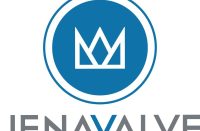– Conavi Medical’s Novasight Hybrid™ System is the first technology to combine both IVUS and OCT to enable simultaneous and co-registered imaging of coronary arteries –
– Company showcasing its Novasight technology this week at TCT 2024 –
TORONTO, Oct. 28, 2024 (GLOBE NEWSWIRE) — Conavi Medical Corp. (TSXV: CNVI) (“Conavi Medical”), a commercial stage company focused on designing, manufacturing, and marketing imaging technologies to guide common minimally invasive cardiovascular procedures, is pleased to announce that the peer-reviewed Journal of the American College of Cardiology: Cardiovascular Interventions has published an article by Tufaro et al. which provides an overview of recent developments in hybrid intracoronary imaging and discusses its potential value in different clinical and research areas, such as percutaneous coronary intervention (“PCI”) guidance, vulnerable plaque detection, and the assessment of focal and systemic therapies targeting atherosclerosis.
An abstract of the article can be accessed here.
Quoting directly from the full article:
“Several studies have shown that specific morphologic features observed on intravascular imaging post-PCI are associated with a high risk of stent failure. Stent underexpansion constitutes the most common cause of stent failure; large edge dissection and plaque at the edge of the stent have been associated with stent edge–related events, whereas tissue or thrombus protrusion in stented segments was found to be a predictor of restenosis and stent thrombosis. Finally, the presence of uncovered or malapposed struts has been associated with an increased risk of stent thrombosis in large registries of patients who had [optical coherence tomography (“OCT”)] imaging at the time of the event, but prospective OCT imaging studies have provided conflicting results; therefore, the role of these features on stent failure remains elusive
Combined [intravascular ultrasound (“IVUS”)] OCT imaging has theoretical advantages over standalone imaging in assessing post-PCI results; IVUS can minimize the risk of stent underexpansion and assess [plaque burden] at the edge of the stent, whereas OCT can detect more accurately edge dissections, the presence of lipid at the reference segments, malappositions, and tissue protrusion. This hypothesis is supported by a recent prospective observational study of 17 patients who underwent elective PCI using the Novasight Hybrid IVUS OCT system [Conavi Medical]. IVUS OCT imaging was performed successfully in 10 patients post–stent implantation. Compared to IVUS, OCT more often identified the presence of incomplete strut apposition (8.0% vs 0.8%; P < 0.001) and tissue protrusion (50.6% vs 15.9%; P < 0.001), but IVUS detected stent underexpansion more often than OCT (28.7% vs 23.1%; P ¼ 0.039). These promising findings are expected to provide the substrate for the conduction of larger studies that will allow us to draw safe conclusions about the superiority of IVUS OCT over standalone intravascular imaging.”
Christos V. Bourantas, MD, PhD, a Consultant Cardiologist at Barts Heart Centre and Professor of Cardiology (Hon) at Queen Mary University London, and one of the authors of the JACC: Cardiovascular Interventions article, commented, “There is a large and growing body of evidence that the use of OCT or IVUS to guide PCI procedures has substantially improved patient event-free survival, enhancing both the long-term safety and effectiveness of the procedure. However, each imaging modality has unique advantages and limitations. Conavi Medical’s Novasight Hybrid System offers an elegant solution, providing simultaneous and complementary data with which to better inform patient care.”
“The publication of this article comes at an opportune time as we showcase our Novasight Hybrid System at the Cardiovascular Research Foundation’s annual Transcatheter Cardiovascular Therapeutics (TCT) conference taking place now in Washington, DC,” said Tom Looby, Conavi Medical’s CEO. “We would like to take this opportunity to thank Drs. Tufaro and Bourantas, as well as their esteemed colleagues who have contributed to the growing awareness and adoption of hybrid imaging in the care of coronary patients, and look forward to continuing to build on that positive momentum as we progress.”
About JACC: Cardiovascular Interventions
JACC: Cardiovascular Interventions encompasses the entire field of interventional cardiovascular medicine, including coronary, structural, peripheral and cerebrovascular interventions. Submissions of original research papers, state-of-the-art reviews, research letters, editorials and viewpoints from cardiology, vascular surgery, neurology, radiology, hematology, vascular biology, materials science, outcomes research and related fields are encouraged. In general, papers on electrophysiology, cardiac surgery or other interventional specialties are not recruited. In 2023, the journal had an impact factor of 11.7.
About Conavi Medical
Conavi Medical is focused on designing, manufacturing, and marketing imaging technologies to guide common minimally invasive cardiovascular procedures. Its patented Novasight Hybrid™ System is the first system to combine both intravascular ultrasound (IVUS) and optical coherence tomography (OCT) to enable simultaneous and co-registered imaging of coronary arteries. The Novasight Hybrid System has 510(k) clearance from the U.S. Food and Drug Administration; and regulatory approval for clinical use from Health Canada, China’s National Medical Products Administration, and Japan’s Ministry of Health, Labor and Welfare. For more information, visit http://www.conavi.com/.
Cautionary Statement Regarding Forward-Looking Information
This news release contains “forward-looking statements” within the meaning of applicable Canadian and U.S. securities laws, which reflect the current expectations of management of Conavi’s future growth, results of operations, performance and business prospects and opportunities. Forward-looking statements are frequently, but not always, identified by words such as “may”, “would”, “could”, “will”, “anticipate”, “believe”, “plan”, “expect”, “intend”, “estimate”, “potential for” and similar expressions, although these words may not be present in all forward-looking statements. Forward-looking statements that appear in this release may include, without limitation, references to Conavi’s plans for the commercialization of its Novasight Hybrid System.
These forward-looking statements reflect management’s current beliefs with respect to future events, and are based on information currently available to management that, while considered reasonable by management as of the date on which the statements are made, are inherently subject to significant business, economic and competitive uncertainties and contingencies which could result in actions, events, conditions, results, performance or achievements to be materially different from those projected in the forward-looking statements. Forward-looking statements involve significant risks, uncertainties and assumptions and many factors could cause Conavi’s actual results, performance or achievements to be materially different from any future results, performance or achievements that may be expressed or implied by such forward-looking statements. Such factors and assumptions include, but are not limited to, Conavi’s ability to retain key personnel; its ability to execute on its business plans and strategies; and other factors listed in the “Risk Factors” sections of the joint information circular of Conavi dated August 30, 2024 (which may be viewed at www.sedarplus.com). Should one or more of these risks or uncertainties materialize, or should assumptions underlying the forward-looking statements prove incorrect, actual results, performance, or achievements may vary materially from those expressed or implied by the forward-looking statements contained in this news release. These factors should be considered carefully, and prospective investors should not place undue reliance on the forward-looking statements.
Although the forward-looking statements contained in the news release are based upon what management currently believes to be reasonable assumptions and Conavi has attempted to identify important factors that could cause actual actions, events, conditions, results, performance or achievements to differ materially from those described in forward-looking statements, Conavi cannot assure prospective investors that actual results, performance or achievements will be consistent with these forward-looking statements. Except as required by law, Conavi expressly disclaims any intention or obligation to update or revise any forward-looking statements whether as a result of new information, future events or otherwise. Accordingly, investors should not place undue reliance on forward-looking statements. All the forward-looking statements are expressly qualified by the foregoing cautionary statements.
Neither the TSX Venture Exchange nor its Regulation Services Provider (as that term is defined in the policies of the TSX Venture Exchange) accepts responsibility for the adequacy or accuracy of this press release.
Contacts
Stephen Kilmer
Investor Relations
(647) 872-4849
stephen.kilmer@conavi.com
Stefano Picone
Chief Financial Officer
(416) 483-0100







